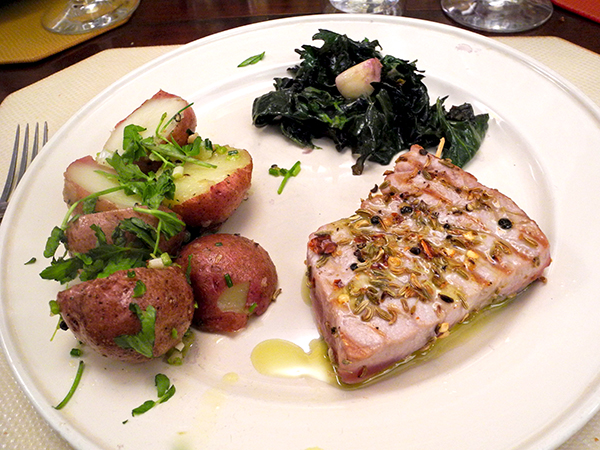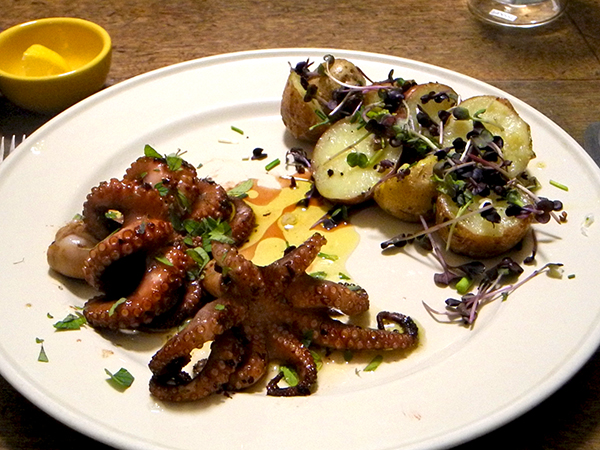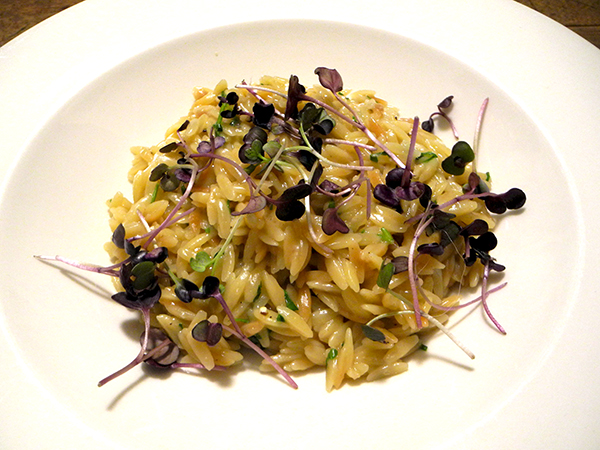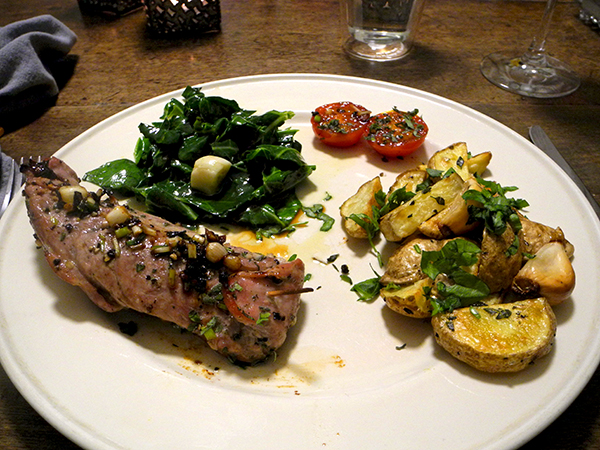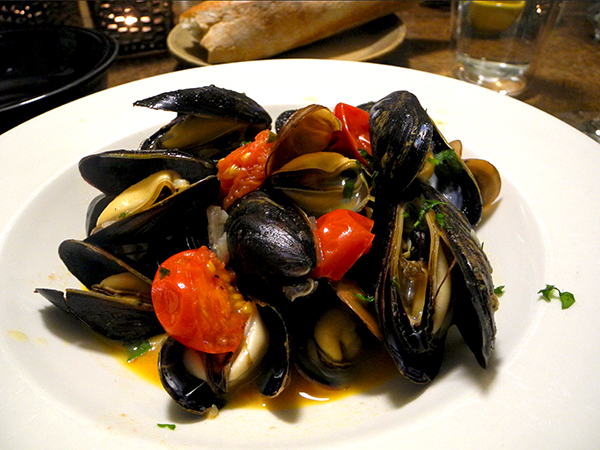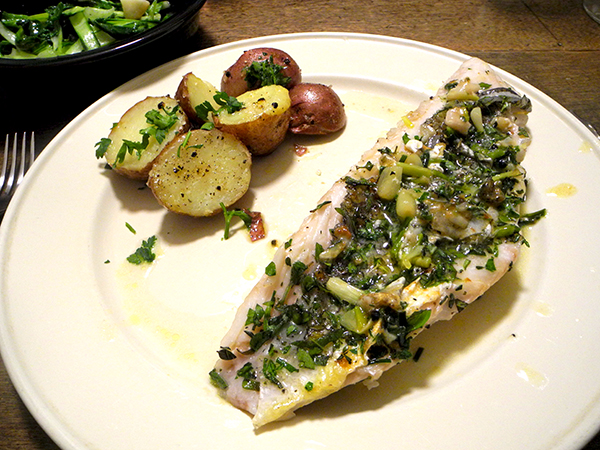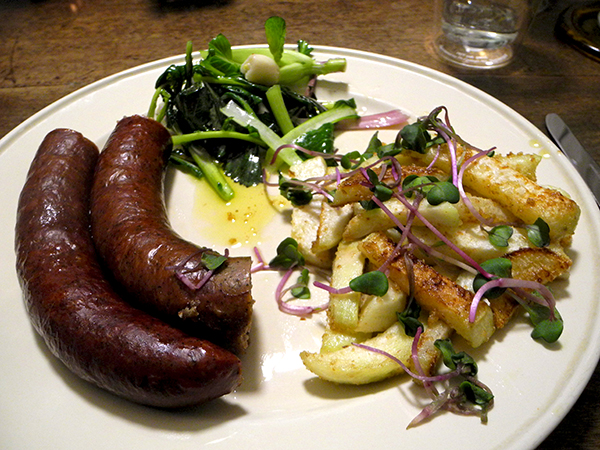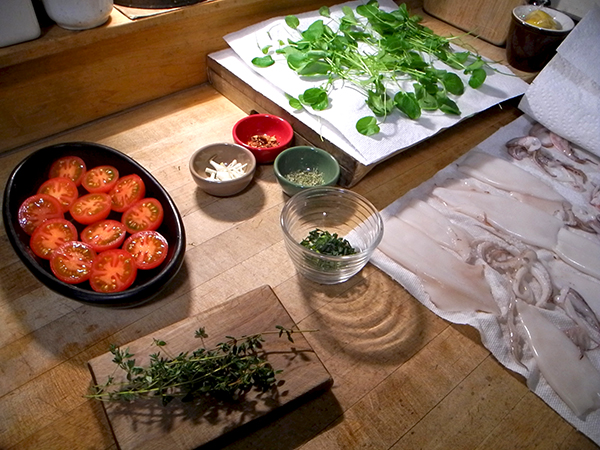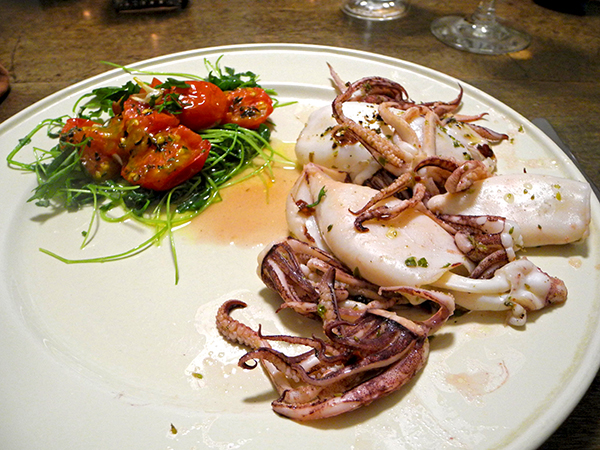We hadn’t seen our friends in years; they were visiting from London and Norfolk, and they were coming to dinner. I wanted to serve something fine, but I didn’t want to spend all of my time in the kitchen once they arrived.
The solution seemed obvious: To start there’d be a good salumi on plates with some excellent greens, and we would end with some very good cheeses. The main course would almost certainly have to be fish (to show off our local bounty and its quality, and because I wanted it to require little heat, because the weather was so very mild), and it would also have to be very simple and quickly assembled.
Grilled tuna, of course.
My plans were confounded early in the day by the fact that I arrived too late at the Greenmarket: the tuna was already gone. Seeing nothing that would be a good substitute, I headed south, because of the logistics, to Citarella rather than The Lobster Place, while knowing that if need be, I would have the latter as a fallback.
All of which is to say is that, while the tuna was delicious, and from the northwest Atlantic waters, it was not purchased at the Greenmarket, directly from the fisherman or his colleague. I had to tell that to our friends, while extolling the otherwise locavore character (except for the Speck) of the the meal we were sharing.
The meal began, after a taste of whole wheat Mario Fongo grissini stirati and mixed black olives from Buon Italia, with a light course of salumi.
- thinly-sliced Alto Adige Speck from Eataly, each piece rolled around the tines of a fork and put on a plate, drizzled with some very good olive oil, accompanied by upland cress from Alewife Farm, seasoned and dressed with some good oil and drops of local hot house Lisbon lemon from Fantastic Gardens of Long Island
- to accompany the Speck and greens we had an Eric Kayser ‘baguette monge’ to tear into
- the wine was a New Mexico (Sierra County) sparkling, Gruet Blanc de Noirs
The main course was assembled pretty quickly after we had finished the salumi and cress, because I had started boiling the potatoes the moment before we sat down to the first.
- two 10 or 11-ounce tuna steaks from the Village Citarella, each halved, their tops an bottoms rubbed with a mix of a generous amount of dry fennel seed and one crushed medium-to-large dried Itria-Sirissi chili, peperoncino di Sardegna intero from Buon Italia, ground together, additionally seasoned with salt and pepper, then pan-grilled for only a little more than a minute and a half on each side, finished with a good squeeze of a Lemon grown locally by Fantastic Gardens of Long Island, and a drizzle of olive oil [the recipe is from Rose Gray and Ruth Rogers, found in ‘Italian Easy’; Recipes from the London River Cafe‘]
- red Norland potatoes from Lucky Dog Organic Farm and John D. Madura Farm (these potatoes are especially sweet by March), scrubbed, boiled in salted water unpeeled, halved, tossed with olive oil and chopped wild garlic from Lani’s Farm, sprinkled with chopped lovage from Two Guys from Woodbridge
- a few handfuls of delicious green and purple-colored flat-leaf Winterbor kale from Tamarack Hollow Farm, sautéed in olive oil in which 4 medium cloves of garlic from John D. Madura Farm had first been allowed to sweat and begun to brown, seasoned with salt, pepper, and a dash of olive oil
- the wine with the tuna, potatoes, and kale was a Portuguese (Dão) white, Casa de Mouraz, Dão Blanco ‘Encruzado’ 2013, from Flatiron Wines & Spirits
The cheese course followed after we had lingered a bit following the main.
- the cheeses were Consider Bardwell’s ‘Experience’, a pasteurized cow cheese; their ‘Manchester’ goat cheese; and an adaged goat cheese from Vermont Creamery, ‘Coupole‘, purchased at Citarella while I was there for the tuna
- the breads with the cheeses were thin slices of potato bread (Balthazar’s ‘Potato Fendu’) from Whole Foods, toasted; and slices of Eric Kayser’s ‘Baguette Monge’ which remained from the first and second courses
- the wine with the cheese was a Spanish (Valladolid) white, Martinsancho Rueda Verdejo 2014
- the music throughout the meal was our own conversation
